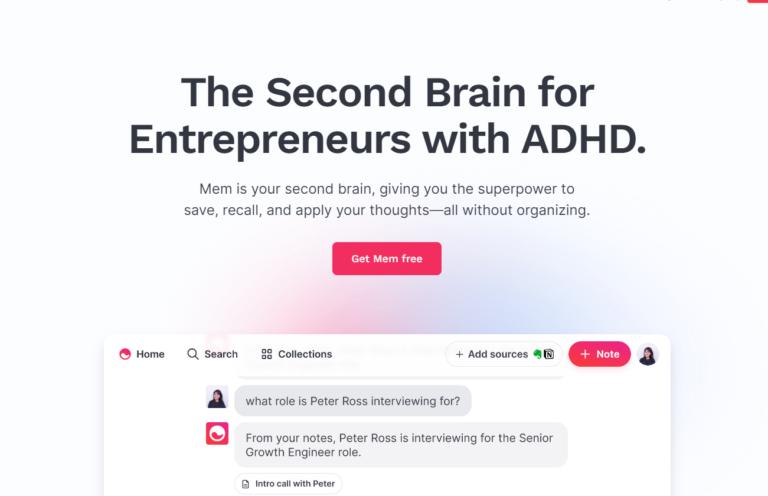
Imagine a world where every interaction you have with technology feels tailor-made for you. A world where websites, apps, and devices anticipate your needs and preferences, providing a personalized experience like no other. With the power of AI, this futuristic vision is now a reality. In this article, discover the endless possibilities of using AI to personalize experiences, from smart assistants that learn your habits to personalized recommendations that make your online journey truly unique. Say goodbye to generic interactions and embrace a future where technology knows you better than ever before.
Collecting User Data
Collecting user data is the first step in creating personalized experiences using AI. By tracking user behavior, businesses can gain valuable insights into how users interact with their websites, apps, or products. This data can include information such as the pages a user visits, the actions they take, and the time spent on each page. By gathering this data, businesses can understand user preferences and tailor their experiences accordingly.
In addition to tracking user behavior, collecting demographic information is crucial in personalizing experiences. This information includes age, gender, location, and other relevant details. By analyzing this demographic data, businesses can gain insights into the preferences and needs of different groups of users. This enables them to create tailored experiences for each demographic segment.
Surveys and feedback are also powerful tools for collecting user data. By actively engaging with users through surveys or feedback forms, businesses can gather direct insights into their preferences, needs, and pain points. This information allows businesses to make informed decisions about personalizing the user experience.
Harnessing Machine Learning Algorithms
Machine learning algorithms are instrumental in understanding user preferences and behaviors. By analyzing past interactions, these algorithms can identify patterns and trends that may not be readily apparent to humans. This enables businesses to provide better recommendations and tailor experiences to individual users.
Understanding user preferences is key to delivering personalized experiences. Machine learning algorithms can analyze user data to identify patterns in their behavior, preferences, and interests. This allows businesses to recommend products, services, or content that align with the user’s individual preferences.
Analyzing past interactions is another important application of machine learning algorithms. By analyzing historical data, businesses can gain insights into how users have interacted with their products or services in the past. This information can help identify patterns and trends that can inform future personalization strategies.

Creating Detailed User Profiles
Segmenting users into groups is an essential step in creating personalized experiences. By grouping users based on similar characteristics or behaviors, businesses can better understand their needs and preferences. These segments can then be used to tailor experiences and offerings to each specific group.
Building a comprehensive user database is crucial in creating detailed user profiles. This database should include relevant information such as demographics, past interactions, preferences, and any other data that can be used to personalize experiences. By consolidating this information, businesses can create a holistic view of each user and provide them with tailored experiences.
Updating user profiles regularly is essential to keep the personalization efforts relevant. As user preferences and behaviors change over time, businesses need to ensure that user profiles are continuously updated with the latest information. This allows for accurate personalization based on the most up-to-date user data.
Real-Time Personalization
Real-time personalization involves delivering tailored content and experiences to users in the moment. By utilizing AI algorithms and data analytics, businesses can dynamically modify content and website elements based on individual user preferences.
Delivering tailored content involves presenting users with personalized information based on their interests and preferences. By analyzing user data, businesses can understand what type of content appeals to each user and deliver it in real-time. This can include personalized product recommendations, relevant articles, or customized promotions.
Utilizing dynamic website elements is another way to personalize the user experience. By dynamically altering website elements such as layout, images, or calls to action, businesses can create an experience that feels personalized to each user. This can lead to higher engagement and conversion rates.
Customizing product recommendations is a powerful way to personalize the user experience. By leveraging AI algorithms, businesses can analyze user preferences and past interactions to suggest products that are most likely to appeal to each individual. This can lead to increased customer satisfaction and higher conversion rates.

Contextual Personalization
Contextual personalization involves taking into consideration user context, such as their location, time, and device type. By understanding these contextual factors, businesses can provide more relevant and personalized experiences to users.
Understanding user context involves analyzing factors such as location and time. By knowing where a user is located and the time of day, businesses can deliver personalized content that is relevant to their current situation. For example, a food delivery app can offer restaurant recommendations based on the user’s location and time of day.
Considering device type is also essential in contextual personalization. Different device types, such as smartphones, tablets, or desktop computers, have different capabilities and user experiences. By tailoring experiences to each device type, businesses can ensure that users have a seamless and personalized experience, regardless of the device they are using.
Analyzing user context is a crucial part of personalization, as it allows businesses to deliver experiences that are relevant to the user’s current situation. By considering factors such as location, time, and device type, businesses can create personalized experiences that feel tailored to each user’s needs.
Predictive Personalization
Predictive personalization involves using AI algorithms to forecast user behavior and anticipate their needs. By leveraging historical data and machine learning, businesses can predict what actions a user is likely to take and suggest personalized actions accordingly.
Forecasting user behavior is a key aspect of predictive personalization. By analyzing historical data and patterns, businesses can predict what actions a user is likely to take in the future. This can include predicting purchasing behavior, content consumption patterns, or even user engagement levels. By understanding these predictions, businesses can personalize the user experience to align with each user’s anticipated needs.
Anticipating customer needs is another benefit of predictive personalization. By understanding user preferences and behaviors, businesses can proactively suggest actions or offerings that meet the user’s needs before they even realize it. This can lead to a more seamless and convenient user experience, enhancing customer satisfaction.
Suggesting personalized actions based on predictions is a powerful tool in personalization. By leveraging AI algorithms, businesses can suggest actions that are tailored to each individual user. This can include personalized offers, recommendations, or even reminders. By suggesting these personalized actions, businesses can enhance the user experience and drive engagement.
Emotion Detection and Analysis
Understanding user emotions is an emerging field in personalization. By analyzing facial expressions and gestures, businesses can gain insights into how users are feeling and tailor their experiences accordingly. This can enhance the overall user experience and create more meaningful connections with users.
Analyzing facial expressions and gestures is a powerful way to understand user emotions. By utilizing AI algorithms and computer vision technology, businesses can detect and analyze facial expressions to determine a user’s emotional state. This information can then be used to personalize experiences and content that align with the user’s emotions.
Tailoring experiences based on emotional responses involves dynamically adjusting content or interactions based on a user’s emotional state. For example, if a user is feeling frustrated, businesses can offer additional support or resources to help alleviate their frustration. By tailoring experiences based on emotional responses, businesses can create a more empathetic and personalized user experience.
Understanding user emotions is a powerful tool in personalization, as it allows businesses to create experiences that resonate with users on a deeper level. By analyzing facial expressions and gestures, businesses can gain insights into how users are feeling and adapt their experiences accordingly.
Voice and Speech Recognition
Interacting with users through voice assistants is becoming increasingly popular. By utilizing voice and speech recognition technology, businesses can create personalized experiences that are hands-free and convenient for users. This can include tasks such as voice commands, voice search, or even voice-controlled devices.
Transcribing and analyzing spoken words allows businesses to gain insights from user conversations. By transcribing and analyzing spoken words, businesses can understand users’ needs, preferences, and pain points. This information can then be used to tailor experiences and offerings to each individual.
Developing natural language understanding is crucial in voice and speech recognition. By training AI models to understand natural language, businesses can create voice assistants that can comprehend and respond to user requests and queries. This enables businesses to provide personalized assistance and information to users in a natural and conversational manner.
Voice and speech recognition are powerful tools in personalization, as they enable businesses to create experiences that are convenient, hands-free, and tailored to individual users’ needs. By developing voice assistants and utilizing natural language understanding, businesses can enhance the user experience and provide personalized assistance.
AI Chatbots and Virtual Assistants
AI chatbots and virtual assistants are revolutionizing customer service interactions. By utilizing AI algorithms and machine learning, businesses can provide instant responses and personalized assistance to users. These virtual assistants can learn from previous conversations and continuously improve the quality of their responses.
Enhancing customer service interactions is one of the main benefits of AI chatbots and virtual assistants. By providing instant responses and personalized assistance, businesses can create a seamless and efficient customer service experience. This can include tasks such as answering frequently asked questions, providing product recommendations, or even resolving customer issues.
Providing instant responses is made possible by the speed and efficiency of AI chatbots and virtual assistants. Unlike human agents, these virtual assistants can analyze and respond to user queries in real-time. This enables businesses to provide instant assistance to users, enhancing their overall experience.
Learning from previous conversations is a valuable feature of AI chatbots and virtual assistants. By analyzing past conversations, these virtual assistants can learn from user interactions and continuously improve their responses. This allows businesses to provide personalized and accurate assistance to users based on their previous conversations.
Ethical Considerations
When using AI to personalize experiences, it is crucial to consider ethical considerations. Protecting user privacy should be a top priority, as personalization efforts involve collecting and analyzing user data. Businesses should ensure that user data is handled securely and with respect for their privacy.
Ensuring transparency is essential in personalization efforts. Users should be informed about the collection and use of their data in a transparent and clear manner. This includes providing clear privacy policies and terms of service that outline the purposes and methods of data collection.
Avoiding discriminatory practices is also crucial in personalization efforts. AI algorithms should be trained on diverse and representative data to avoid biases and discrimination. Additionally, businesses should ensure that personalization efforts do not discriminate against or exclude certain groups of users based on factors such as race, gender, or socioeconomic status.
In conclusion, AI presents a powerful opportunity for businesses to personalize experiences for their users. By collecting user data, harnessing machine learning algorithms, creating detailed user profiles, and utilizing various personalization techniques, businesses can deliver tailored experiences that resonate with each individual user. However, it is important to consider ethical considerations and ensure that personalization efforts prioritize user privacy, transparency, and avoid discriminatory practices. By striking the right balance, businesses can use AI to provide personalized experiences that enhance user satisfaction and drive engagement.






